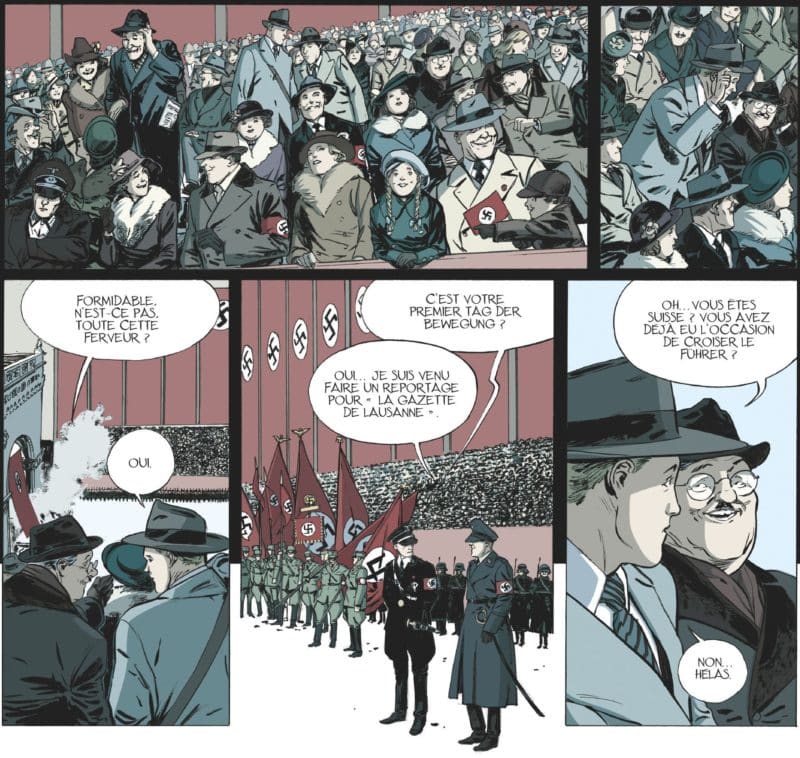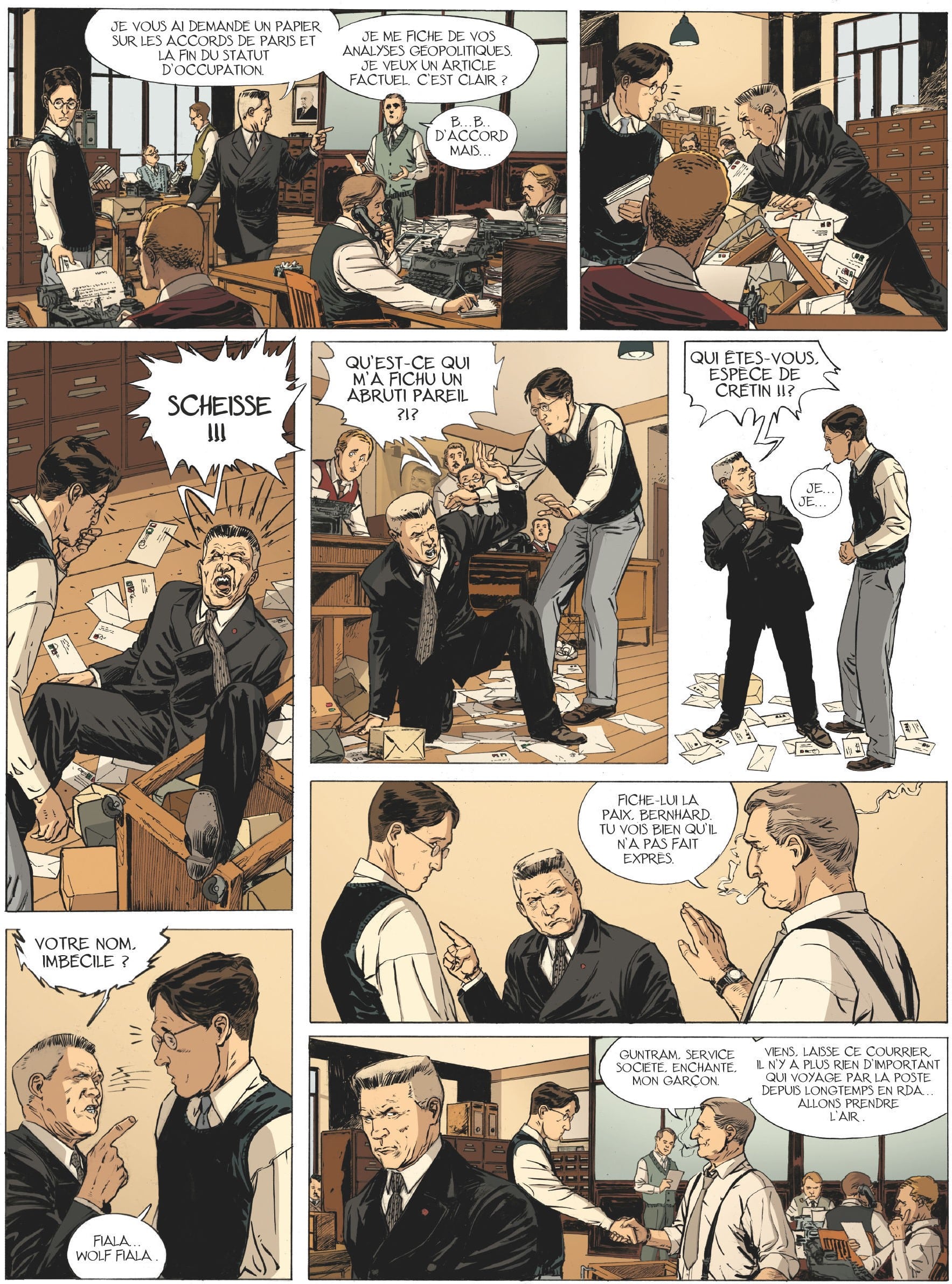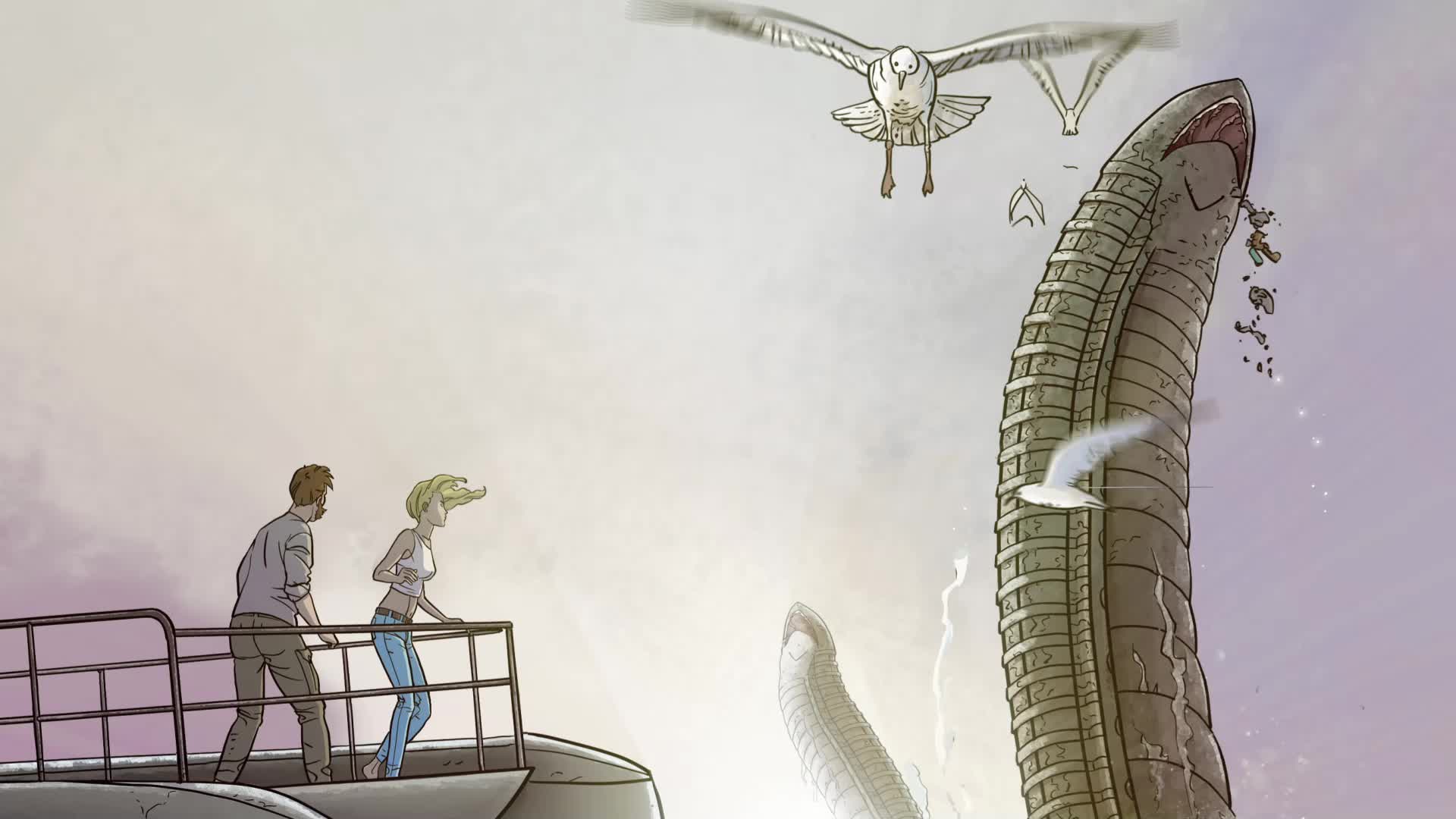Hitler is often presented as an undisputed leader of Germany from his assumption of office until his suicide, but the historical truth is not so simple. Precisely, Glénat in La part de l'ombre, proposes to understand it in this first volume released in January.
The story of a failed attempt on Hitler's life
On November 9, 1938 in Munich, a man prays alone in a modest room. Going out into the street, his impassive face contrasts with the many happy people around him. We see that each inhabitant is inflated with nationalist pride as she welcomes Führer Adolf Hitler. In addition, the city was paved in the color of the Reich. This man walks towards the stadium and introduces himself as a Swiss reporter but, as all eyes turn to Hitler, he pulls out a pistol and tries to kill him. We learn very quickly that this man is called Maurice Bavaud and that he was executed in 1941 According to the official thesis of justice, Bavaud acted alone and it would be a madman. Very pious, the scenario shows us his passage in a fundamentalist Catholic seminary opposed to Hitler. There he is friends with an exalted Russian who thinks he is the tsar's cousin and wants to eradicate communism and the Jews with Hitler's help. If Hitler refuses his support, this comrade offers to kill him.  Bavaud is not presented as a hero because in prison, he is afraid of dying. It certainly did not succeed, but this attack had a rather unexpected consequence. The Führer's growing paranoia led him to demand the disappearance of all representations of William Tell in Germany. The shadow part is therefore a historical diptych on the most advanced attack against Hitler. The screenwriter does not hesitate to give through the voice of the judge an extract of the decision of the court.
Bavaud is not presented as a hero because in prison, he is afraid of dying. It certainly did not succeed, but this attack had a rather unexpected consequence. The Führer's growing paranoia led him to demand the disappearance of all representations of William Tell in Germany. The shadow part is therefore a historical diptych on the most advanced attack against Hitler. The screenwriter does not hesitate to give through the voice of the judge an extract of the decision of the court.
Berlin cut in two
Pat Perna's screenplay, however, is more complex. Indeed, from the first pages of La part de l'ombre as Maurice Bavaud leaves the parade, the reader suddenly finds himself turning the page in the editorial office of the Berliner Zeitung in 1955 in East Berlin. We follow the young apprentice reporter Wolf Fiala who assists the disillusioned Guntram Muller. Pat Perna then proposes more flexible passages between the two historical periods: the reader sees the sad father in court in 1955 and the same feeling in 1938. Fiala and Müller will start from the failure of the trial in revision of Maurice Bavaud to try to unravel the many mysteries of the case. They are the only ones who are interested because the courtroom is empty. The reader gradually discovers the reporter Muller much more troubled – in the image of post-war Germany. He was a police inspector at the time of the Reich and it was he who investigated Bavaud on appeal. This part also provides an understanding of life in Germany during this tense period of the Cold War. The passage between the two parts of Berlin is still easy before the construction of the wall. Through the images, we see the contrast between the eastern part of Berlin still marked by many stigmata of the Second World War, but covered with propaganda posters, and West Berlin which shines with new storefronts and advertisements. Francisco Ruizge brings his talent to highlight the story. It has a very classic style in shapes, but adding a vivid line and a fluid and varied layout. He plays on the frame to mark the two time periods: black for the 30s and white for the 50s. By a skilful play on colors, he shows the horror of the guillotine. We can also highlight the very successful cover mixing a very symbolic poster of Hitler with the more realistic portrait of Maurice Bavaud.  This first volume of the shadow part is part of the great Franco-Belgian tradition of historical comics. Quite conventionally, the reader identifies with the young journalist discovering both his profession and the Bavaud affair. The classic drawing and the scenario multiplying the tracks in the past and the present are reminiscent of Once Upon a Time the France, but it lacks for the moment a depth to these historical characters. JustFocus also reviewed a recent headline about the hunt for Hitler's corpse here and another more political headline about the United States on this link.
This first volume of the shadow part is part of the great Franco-Belgian tradition of historical comics. Quite conventionally, the reader identifies with the young journalist discovering both his profession and the Bavaud affair. The classic drawing and the scenario multiplying the tracks in the past and the present are reminiscent of Once Upon a Time the France, but it lacks for the moment a depth to these historical characters. JustFocus also reviewed a recent headline about the hunt for Hitler's corpse here and another more political headline about the United States on this link.







































